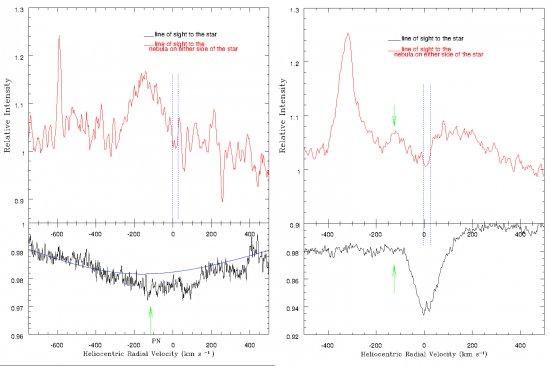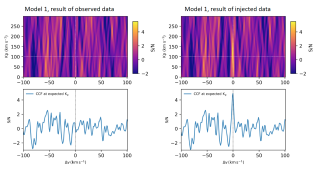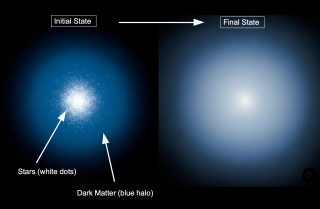Identification of the carriers of the diffuse interstellar bands (DIBs) has been very elusive since the beginning of the last century. Differentcomplex carbon-based molecules - e.g., carbon chains, polycyclicaromatic hydrocarbons (PAHs), and fullerenes - have been proposed asDIB's carriers. If the DIBs arise from large gas phase molecules, such as PAHs and fullerenes, then they are also expected to be present in other carbon-rich space environments like circumstellar shells around evolved stars. Diffuse circumstellar bands (DCBs) in absorption have been unsuccessfully studied for more than 40 years. Thus, the conventional wisdom is that there are no diffuse bands in circumstellar environments. The main difficulty to detect DCBs is to distinguish them from the DIBs. This distinction can only be made by measuring the radial velocities of the circumstellar and interstellar components. Thiswork provides a detailed DIB radial velocity analysis and a complete search of diffuse bands towards three planetary nebulae (PNe; Tc 1, M 1-20, and IC 418) containing fullerenes. Interestingly, we report the first possible detection of two DCBs at 4428 and 5780 Å in the fullerene-rich circumstellar environment around PN Tc 1. The presence of 4428 and 5780 Å nebular emission at the radial velocity of Tc 1 further suggests their circumstellar origin. This possible detection of DCBs in an environment rich in fullerenes and fullerene-related molecules may provide a link between fullerene compounds and the DIB carriers. Laboratory and theoretical studies of fullerenes in their multifarious manifestations - buckyonions, fullerene clusters, fullerenes-PAHs, metallofullerenes, fullerene-like fragments or buckybowl structures - may help solve the astronomical mistery of the identification of some of the DIB carriers.
Figure caption: Profiles of the broad 4428 Å band (left panel) and of the 5780 Å feature (right panel) towards Tc 1 central star (black) and average of two sight lines to the nebular position on either side of the nebula. In both panels, the dashed blue l
Advertised on
References



